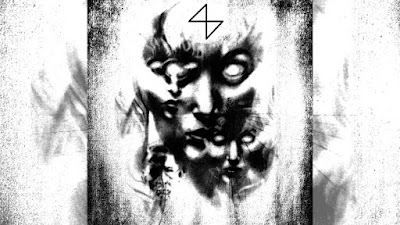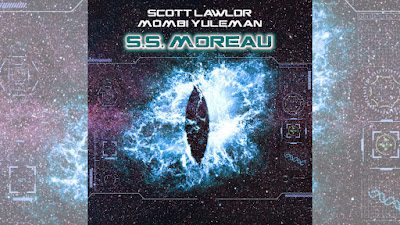Dark Ambient Review: Chapter One
Review by Casey Douglass
 |
| Album Cover |
Bullies suck. Sadly, the world is infested with them. It might be the knuckle-dragger at the shop who bumps into people deliberately, hoping for a fight, or the keyboard warrior on social media who rages and screams at the slightest, tiniest offence, righteously dishing out death threats and harassing people off the platform. These are the thoughts that flowed through my mind on listening to Engravings’ dark ambient album Chapter One, because, for me, it sounded like the soundtrack to a film that sees the bullies get a big dose of payback from someone they pushed too way far.
I think the track titles are probably the spark that kindled this particular idea in my mind. Track titles such as Spite, Hatred and Revenge certainly steered me away from any notion of peace and fluffiness. I’m sure someone, somewhere, has named their cute little bunny-rabbits those names though, such is life. For the most part though, those words tend to mean what we think they mean, so I'll jog on with those meanings. Of course, the music also helped to bring me to the “bully revenge” idea, its mixture of vibrating tones, footsteps and echoes depicting nicely insidious soundscapes.
The opening track: Spite, gets things off to an ominous start. An echoing, cave-like beat knocks along from ear to ear, a buzzing tone weaving its way through the air as a tinny whining sound falls. There are resonant flares that put me in mind of a pulsing light-bulb, hanging bare in a barren room. The beat changes and gathers more energy, taking on a more sinister feeling. For me, this track would be the kind of track that’d accompany a montage of a character in a film plotting their revenge. Hunched over, desk strewn with scribbled notes, and an energy and drive that they’ve never experienced in other areas of their life. Until now.
One of my favourite tracks is The Last Thing I See. It opens with a pulsing feeling, whispers, and echoing high tones. The soundscape fluctuates and is airy, or light, but also buzzing. The track title and music combined to give me the image of someone tied to a chair, one of the bullies unlucky enough to fall into the clutches of the films’ protagonist. There is a dark, rasping, panting aspect to things, a warbling buzzing, melancholy tone setting a sad scene. The soundscape felt like one of desperation and resignation, and ends with panting, scraping echoes and rumbles. A really dark track.
Another favourite track for me was Alone In The Shadow Of My Failure. It begins with a buzzing and a resonant drone, a bass rumble deepening things. A soft electronic tone begins, one that feels both sad and a little bit cyber-punk. Some of the tones are a little “car-horn-like” at times, and after the midpoint, there is a kind of digital-broth simmering sound. In the context of the bully revenge film theme, this track caused me to imagine a bully who was too afraid to face the consequences of their actions. They work in a basement comic book store and use one of the many samurai swords decorating the walls to commit suicide, surrounded by the comics that they love. A low, pink light bathes the scene in warmth, the clicking of the ventilation system the only sound.
Chapter One is a dark ambient album that does seem to simmer with spite, and others of those emotions that come along as part of being human. Any horror lover knows the benefit of enjoying a nice on-screen bloodbath or fright-fest, and horror fans tend to be the some of the nicest, most even-tempered people that I know. This album might send you off on a different imagination holiday, but I certainly enjoyed mine. If you like brooding soundscapes and buzzing tones and echoes, you should check out Chapter One.
Visit the Chapter One page on Bandcamp for more information.
I was given a review copy of this album.
Album Title: Chapter One
Album Artist: Engravings
Label: VoidSoundLTD
Released: 21 Jan 2021








